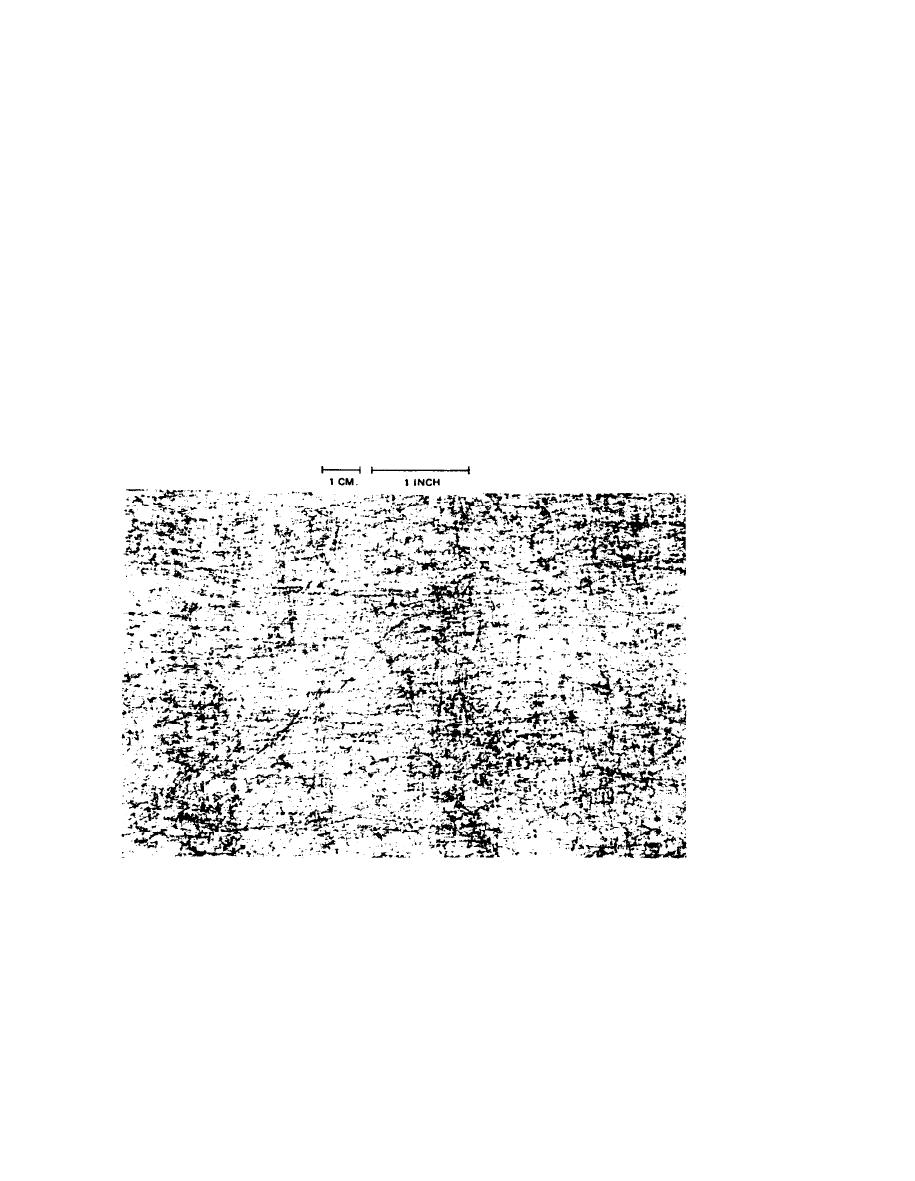
TM 5-818-8/AFJMAN 32-1030
water courses. The sediment control function is
ballast to prevent contamination and resulting
actually a filtration function.
strength loss of the ballast by intrusion of the
f. Reinforcement. In the most common reinforce-
subgrade soil. In construction of roads over soft
ment application, the geotextile interacts with soil
soil, a geotextile can be placed over the soft
through frictional or adhesion forces to resist
subgrade, and then gravel or crushed stone placed
tensile or shear forces. To provide reinforcement, a
on the geotextile. The geotextile prevents mixing
geotextile must have sufficient strength and em-
of the two materials.
bedment length to resist the tensile forces gener-
h. Moisture Barrier. Both woven and nonwoven
ated, and the strength must be developed at
geotextiles can serve as moisture barriers when
sufficiently small strains (i.e. high modulus) to
impregnated with bituminous, rubber-bitumen, or
prevent excessive movement of the reinforced
polymeric mixtures. Such impregnation reduces
structure. To reinforce embankments and retain-
both the cross-plane and in-plane flow capacity of
ing structures, a woven geotextile is recommended
the geotextiles to a minimum. This function plays
because it can provide high strength at small
an important role in the use of geotextiles in
strains.
paving overlay systems. In such systems, the
g. Separation. Separation is the process of pre-
impregnated material seals the existing pavement
venting two dissimilar materials from mixing. In
and reduces the amount of surface water entering
this function, a geotextile is most often required to
the base and subgrade. This prevents a reduction
prevent the undesirable mixing of fill and natural
in strength of these components and improves the
soils or two different types of fills. A geotextile can
be placed between a railroad subgrade and track
performance of the pavement system.
Figure 1-6. Heat-Bonded Nonwoven Geotextile.
1-6


 Previous Page
Previous Page
